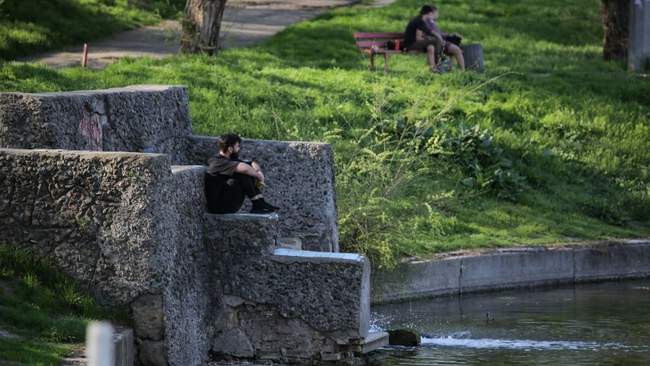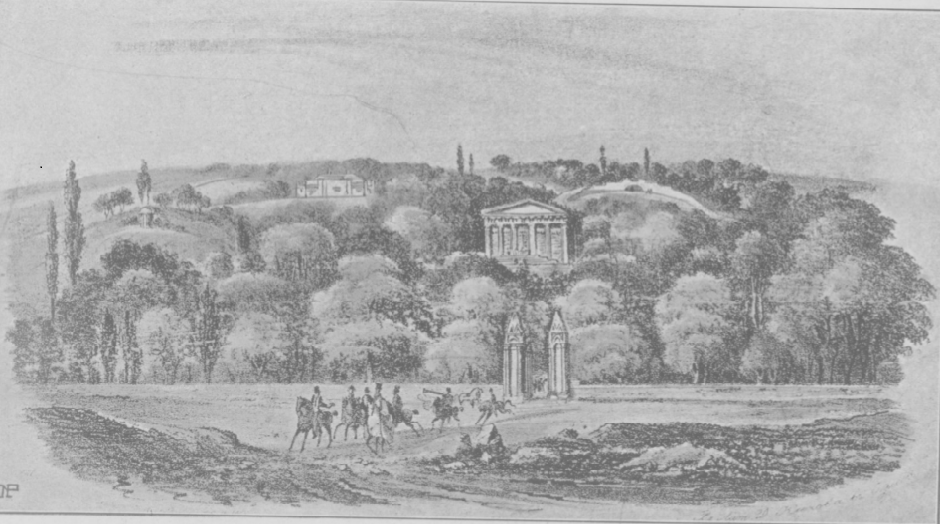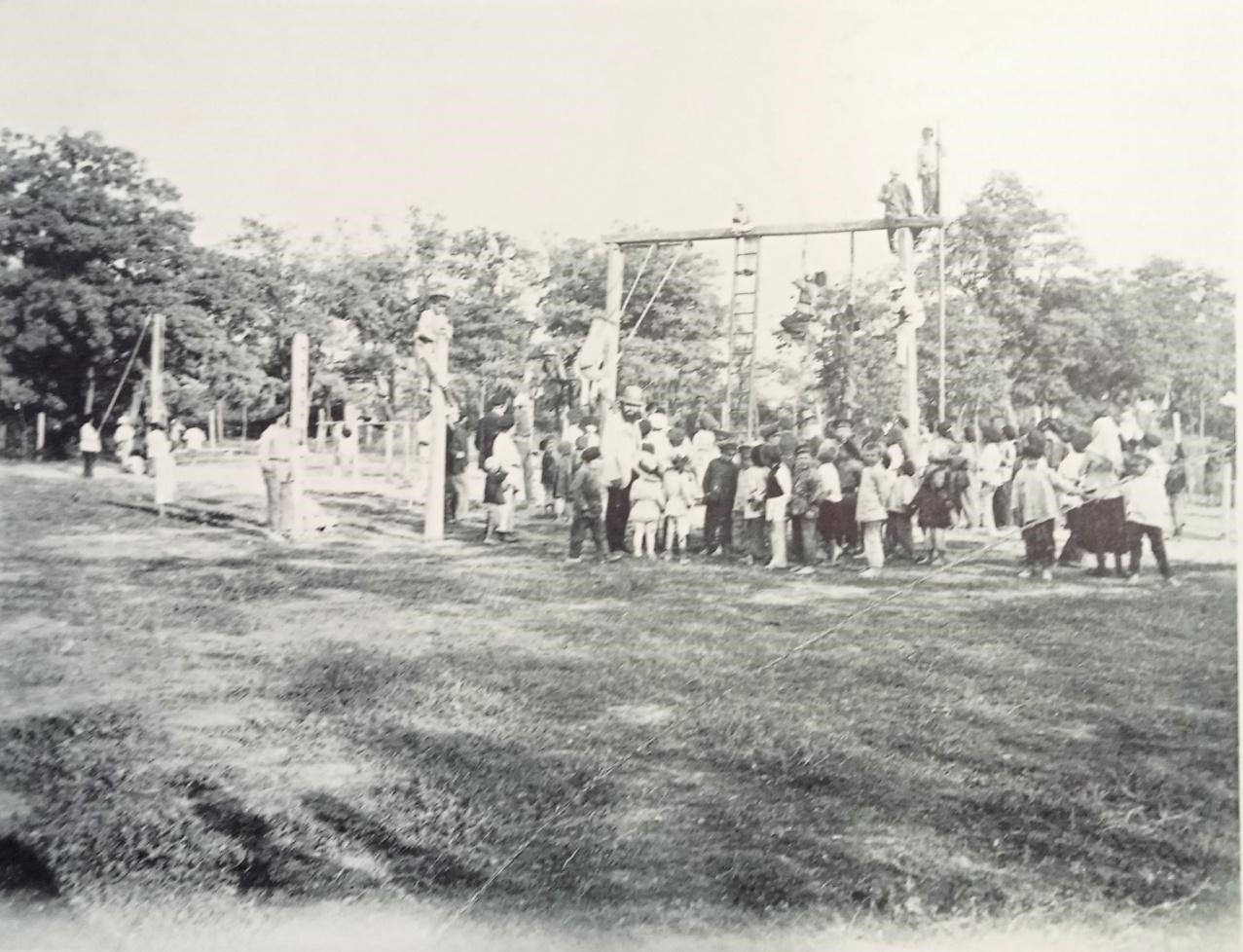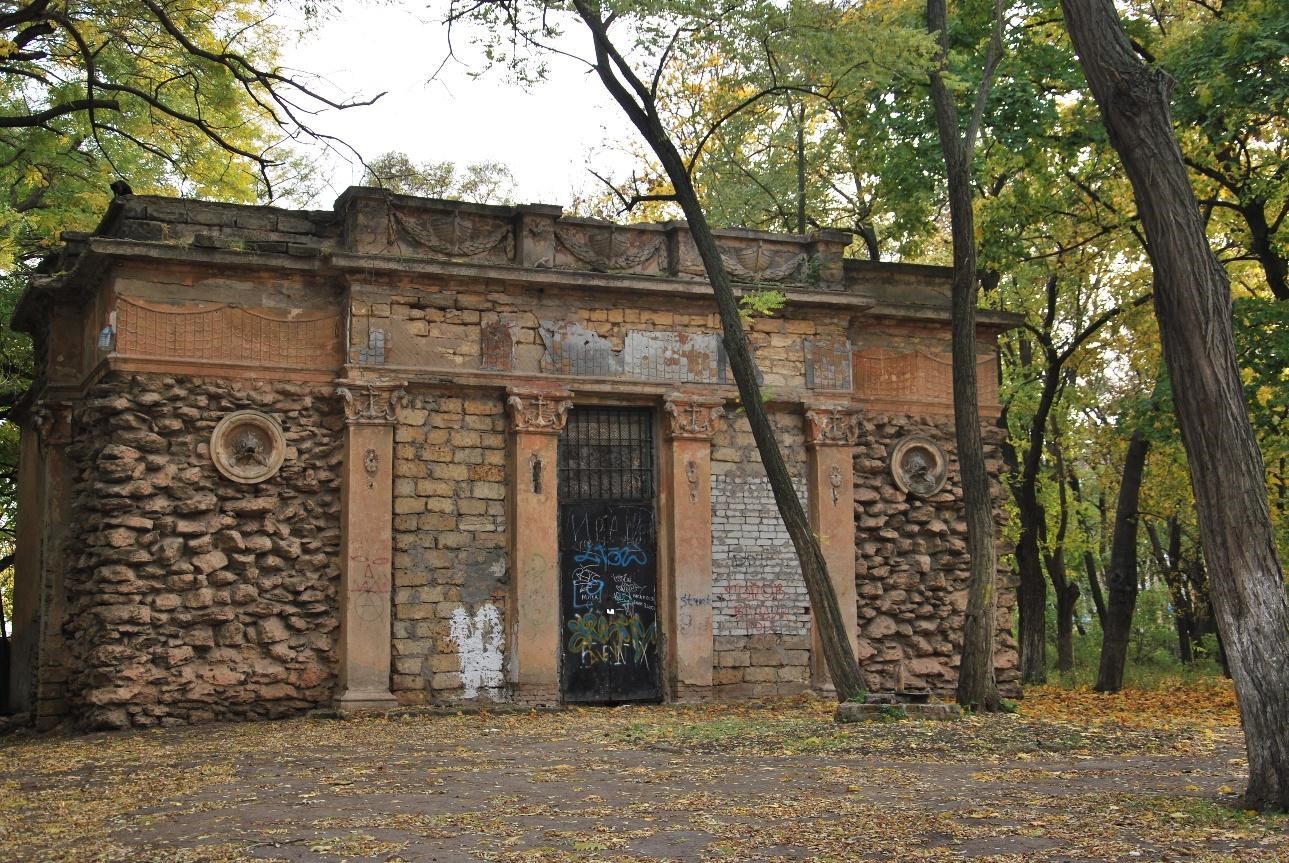Меню
Social networks
Sections
Feb. 18, 2025, 11:11 p.m.
The Rich History and Transformation of Duke's Garden in Odesa
Цей матеріал також доступний українською200

Photo: Intent/Natalia Dovbysh
"On the site where the Duke de Richelieu Garden is now abandoned, covered with quarries and almost devoid of vegetation, a luxurious, blooming dacha of the Duke de Richelieu used to stand until the fifties of the last century," described the Duke's Garden by Odesa historian Alexander De Ribas in 1913.
Duke's Garden is located at the junction of two rather colorful historical districts of Odesa: Moldavanka and Slobodka. There are many stories associated with this area. In 1789, it was here, in the Water Gully, where Ribas and his Cossack regiments spent the night before the storming of Khadjibey on September 14. At the same time, historical sources point to a spring with good water, which the Cossacks used to quench their thirst on the eve of the Battle of Khadjibey. The springs in the park still exist today. They fill the ponds created on its territory with water.
At that time, one could often observe water springs coming to the surface at the bottom of Odesa's gullies. The location of the Duke's Garden on the slope of the Vodyana Gully was determined by such springs that gushed out of the ground there.
Such a number of springs led to the appearance of a large number of wells in the Vodyanaya Balka in the time of Khadjibey. Over time, water from these wells was drawn not only by local residents, but also by water trucks, which then transported it through the streets. Hradonachalnytska Street was once called Vodovozna Street.
After the capture of Khadzhibey, a part of the Water Beam (as the future Balkivska Street was called at that time, where the Duke's Garden is now located) was transferred to Colonel de Volan, but he refused to give up this land, after which it passed to Duke Richelieu, who was impressed by the unique landscapes and decided to create his summer house on one of the slopes of the wide beam. Initially, this area was a gentle, picturesque cliff from which cold spring water gushed. Due to the presence of abundant springs and the protection of the area from the wind, it was very convenient for planting a flowering garden.
Duke Richelieu had the idea to create a garden a year after his arrival in Odesa, and by 1810 all the main work had been completed. However, Richelieu was not the only one who was tempted by the picturesque views of this area. Richelieu's neighbors in the dacha were Thomas Coble, an Englishman and military commander of Odesa, Sporidi, a Greek, Count Potocki, a Pole, and Count Razumovsky, the grandson of the last hetman. All of their dachas were buried in lush vegetation because there was no shortage of water.
At the beginning of the nineteenth century, Duke Richelieu believed that Odesa would grow not along the sea, but deep into the steppe. Therefore, he made a lot of efforts to improve this part of the city's outskirts.
Prof. Nadler described the area chosen by Duke Richelieu for his garden as follows: "Richelieu chose the place for his garden and summer house quite well. The plateau on which Odesa is located descends here down a rather steep slope into a valley, on the opposite side of which another hill rises. The gully formed in this way is protected from strong winds blowing from the steppes, while moist sea air has free access from the bay. In the early nineteenth century, there was a fresh water spring in the gully, which was called Bozhyi. This spring formed a small stream with picturesque banks."
Rainwater flowing from all sides into the gully formed a rather significant layer of fertile soil at its bottom. Under Richelieu's leadership, special hydraulic structures were created to regulate the stream and rainwater runoff after the 1809 hurricane, and ponds and fountains were installed.

Richelieu's dachas. Image: book "Old Odesa" by A. M. De Ribas.
A solid stone fence with gates and columns of lancet architecture was built around the garden. Behind the gates of the summer house were elegantly designed buildings: a rotunda pavilion, a building built in the style of a Greek temple, gazebos, and the Richelieu house on top of a beam.
Alexander De Ribas characterized Richelieu's dacha as follows: "It was not a dacha, but a corner of Versailles enchantingly created in Odesa."
Vegetable gardens were planted at the bottom of the gully. The entire slope of the gully and the plateau were planted with white acacias, birch bark, ash, walnut, and vinegar trees. Poplars were planted at the very bottom of the gully. Elderberry and lilac bushes were planted on the outskirts of the garden. Nurseries of fruit trees (especially cherry and apricot trees) were organized in the most secluded and protected parts of the garden. Some of the flowers for his garden were ordered by Richelieu from his family estate in France.
In 1814, Duke Richelieu left Odesa to become Prime Minister of France. He transferred his garden, which the Duke was constantly worried about, to his adjutant Ivan Stempkovsky, who in 1826 transferred the garden to the city with the obligatory condition of preserving the former summer residence of Duke Richelieu.
Later, the garden and all the buildings on its territory were used by Odesa mayors as their summer cottages. In the 1830s, the garden and the former Richelieu dacha were used by the mayor of Odesa, Oleksii Liovshyn, under whose tenure the garden flourished.
There are many legends and spooky stories associated with the surroundings of Duke's Garden. A whole layer of such legends is dedicated to the Masons. Mentions of Masonic dungeons under Count Razumovsky's estate can be found in the collection From the Past of Odesa, compiled by Odesa librarian L. F. De Ribas. In it, De Ribas cites the testimony of S. Borysovych, who visited Razumovsky's estate: "It was said that his underground galleries, lined with stone, went far under the city and were connected to some houses." However, Borysovych himself did not see these dungeons; he only describes rumors about them.
Mentions of the Freemasons under Count Razumovsky's leadership are also found in an article by D. Mallory (a pseudonym of the famous Odesa feuilletonist Borys Flint) published in 1929: "In the depths of the caves, skillfully hidden from prying eyes, a Masonic lodge met under the patronage of Count Petro Razumovsky himself." The connection of the Masons with the Razumovsky family is mentioned in the Bulletin of the Odesa Commission of Local History of 1925: "...in Odesa, legends spread about meetings of Freemasons at the home of the Razumovsky brothers, who were also Freemasons. Kyrylo Razumovsky was in exile in the city in 1824-1826 after being imprisoned in the prison of the Saviour Euphemia Monastery in Suzdal, as a Rosicrucian and a founding member of the Society of Lancaster Schools of Mutual Learning in 1819. It is quite clear that the lyceum (meaning the Richelieu Lyceum - D.J.) Masons from the Kharkiv circle were also in favor of Ukrainian freethought."
Another place where the Masons gathered was Gauguin's dacha on the right side of Duke's Garden. Here is how V. Kokhanskyi described it in his guide to Odesa in 1894: "This dacha, of fanciful architecture, was built by the Freemason architect Hartwig for himself; he is buried here. According to legend, only a Freemason can own a house, and the other owners must soon die. The case of the strange deaths of the owners of the dacha, Gauguin and his sister, who died of a dislocated leg in the same year, one year after the other, served to strengthen this belief, which the residents of Moldavanka had full confidence in."
After 1837, the park began to decline. In her book Moldavanka, local historian Tetiana Dontsova cites the journals of the Construction Committee of 1850-1860, which indicate the need to dismantle the building due to its dilapidated condition. By Vorontsov's order, Richelieu's house in Vodyana Balka was maintained as a memorial house until 1849, after which the costs of its maintenance were canceled. The garden was used irrationally. Soon the Richelieu house was dismantled.
In 1856, the garden was leased to the merchant Pashkov for 50 rubles per year for stone breaking with the right to graze the working cattle necessary for quarries in the garden and use the vacant premises. Until the 90s of the 19th century, the lower part of the garden was rented out to a vegetable gardener with the right to graze cattle.
In 1859, the garden was transferred to the Odesa Guardianship Committee to establish a shelter for the homeless and children of prisoners. In 1875, a part of the former Duke's garden was given to the Society for the Neglect of Infants to build an orphanage. Also at this time, an Odesa battalion was temporarily stationed here in a camp parking lot.
In 1878, the city authorities planned to restore the lower part of the garden. At the same time, in 1880, shell rock was mined here for the city.
In 1892, Professor Nadler, describing the garden, pointed out the destroyed fence, the stream, which turned into a dirty half-dried ditch. By that time, there was no trace of the fountains. By the end of the 19th century, cafeterias were set up in the upper part of the garden, where, according to Nadler, "everything from food to servants was disgustingly unclean."
Despite its desolation, Moldovan residents loved the garden and visited it often. In Hryhorii Moskovych 's 1905 guidebook, we find the following description: "It used to be a beautiful garden with fountains, ponds, streams, and rich vegetation. Nowadays, only some vegetation has survived, in the shade of which the poor population of Moldavanka likes to spend their leisure time on holidays. A part of the garden is reserved for a children's playground.
The city arena for children's games in Dyukivskyi Garden was built in 1890 on the initiative of the Mayor Hryhorii Marazli to enable children of poor residents of the suburbs of Moldavanka, Slobodka-Romanivka and other nearby areas to gather for physical exercises and joint games under the supervision of a special manager.
The arena was intended for children aged 7 to 15. The arena was open annually from May 1 to October 1 from 9.00 to 12.00 and from 15.00 to sunset. The arena was a 1.5 hectare area with a shelter in case of rain, benches, a frame with gymnastic equipment, parallel bars, horizontal logs, a jumping barrier, swings, pins, balls and other games.
Colossal damage was done to the garden in 1918, when, due to the lack of fuel in Odesa, trees were cut down for firewood. The garden was completely destroyed in 1 day. In the 1930s, an attempt was made to reconstruct the former garden. However, all the efforts to restore the garden were undone by the Second World War.

A kindergarten in Dyukivske. Image: book "Odesa City Public Administration"
The post-war reconstruction of the former Richelieu garden was completed in 1949, and the garden itself was renamed Peremoha Park. The park attracted filmmakers Felix Mironev and Marlen Khutsiev, who used it for several episodes of the movie Spring on Zarechnaya Street.
Various attractions and a children's library were located in Peremoha Park. In the early 1950s, it was decided to organize a permanent regional agricultural exhibition in the park. The park was rebuilt for the exhibition from 1950 to 1955. The work was carried out by a group of Odesa architects led by H. Topuz, who developed a master plan for the site, the main entrance to the exhibition, and a number of pavilions. The exhibition opened on October 23, 1955.
Exhibition pavilions were built in all districts of Odesa region. The exhibition also featured exhibits produced by the city's industrial enterprises. For example, the products of the agricultural machinery plant, agricultural raw material processing plants, and many other industrial enterprises of Odesa.
Since 1956, as the number of industrial pavilions increased, the exhibition was expanded from agriculture to other sectors of the economy. Thus, the famous pavilion of the Slava whaling flotilla appeared with an entrance arch made of a blue whale's jaw and a harpoon gun at the entrance. Later it was turned into a museum of the flotilla.
We can still see the remains of the pavilions of numerous exhibitions in Peremoha Park.

The pavilion. Photo: Dmytro Zhdanov
In the late 1950s, Peremoha Park was converted into a sports and entertainment park. An outdoor sports pool with a diving tower and a spectator stand was created in the park. Swimming competitions were organized in the pool. A boat station began operating on the pond. At the same time, a green theater and a planetarium were opened. Pioneer camps were organized in the exhibition pavilions.
In 1971, the Crystal (later Morozko) ice rink was opened in the park. In April 1974, the park hosted the exhibition "Tourism and Recreation in the United States". The exhibition was opened by the US Ambassador Walter J. Stessel.
In 1972, the park acquired the status of a park-monument of landscape art of regional significance. In the first half of the twentieth century, the entrance to the park was paid (as well as to all other parks in Odesa), until in the 1960s it was decided to cancel the fee for visiting city parks, which, according to some researchers, accelerated its neglect.
The story of Duke's Garden is not yet complete. This green island on the border of Moldova and Slobodka has seen times of withering and flourishing throughout its history. A new stage of prosperity for a part of the old history is still ahead.











